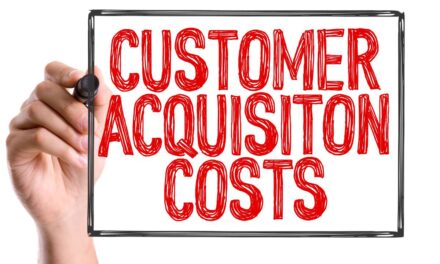Introduction
You know the drill. It’s the end of a long day, you’re the last one at the office, and there’s a stack of invoices on your desk — that’s the entrepreneur’s midnight oil. And in those quiet moments, it’s cash flow that’s often playing on repeat in your mind. If you’re running a small business or just tossing around the idea of starting one, you understand that cashflow isn’t just an accounting term; it’s the daily bread that keeps your business dreams fed. I’ve been right where you are, turning pockets inside out, looking for that extra bit of liquidity. So, let’s talk shop about some real-deal strategies that can help keep your cash flow as fluid as your morning cup of joe.
Section 1: Deciphering Your Cashflow
Understanding your cashflow is akin to understanding the rhythm of your business’s heart. It’s essential to have a clear grasp of where your money is coming from and where it’s going. Modern accounting software, beyond the traditional cash flow statements, can provide deep insights into your financial patterns. Tools like QuickBooks or FreshBooks offer real-time analytics, helping you pinpoint potential shortfalls before they become emergencies. Remember, a proactive stance is your best defense against cash flow surprises.
Section 2: Accelerating Income with Smart Billing
Invoicing isn’t just about sending out a bill; it’s about timing, accuracy, and incentives. To encourage prompt payments, consider offering early payment discounts or adopting online payment systems for their convenience. When payments lag, don’t hesitate to follow up. Effective communication with customers about late payments can help maintain both your relationship and your cash flow.
Section 3: Strategic Payables Management
Negotiating payment terms with suppliers can be a game-changer for your cash reserves. By consolidating orders for better rates or adopting a just-in-time inventory system, you can significantly reduce costs. The key is to maintain a balance between liquidity and your relationships with suppliers, ensuring you have enough cash on hand without straining those critical connections.
Section 4: Crafting a Cash Flow Forecast
Forecasting is not just a financial exercise; it’s a strategic tool. By projecting future cash flow based on historical data, seasonal trends, and market analysis, you can anticipate and prepare for future cash needs. This foresight allows you to make informed decisions, from capital investments to hiring, with confidence.
Section 5: Proactive Financing
Securing financing before it’s needed can provide a cushion for unexpected downturns or opportunities for growth. Whether it’s a line of credit, a short-term loan, or invoice financing, the key is to establish these relationships early. By understanding your options and choosing the right one for your business, you can ensure you have the financial flexibility when it matters most.
Conclusion
And there you have it. Cashflow isn’t just a buzzword or a line item on a balance sheet — it’s the fuel in your business’s tank. These five strategies aren’t just theories; they’re the practical moves that can keep your business humming along. It’s about being one step ahead, so when a surprise expense pops up or a big opportunity knocks, you’re ready to answer. So, take these tips, put them into play, and watch as your cashflow worries start to fade into the rearview mirror. Here’s to your business, where the cash is flowing and the future’s looking bright.
Sources for Statistics and Further Reading:
- Business News Daily: Strategies for Cash Flow Survival: https://www.businessnewsdaily.com/15017-cash-flow-strategies.html
- Forbes: Smart Ways to Manage Cash Flow: https://www.forbes.com/sites/melissahouston/2023/04/25/7-smart-ways-to-manage-cash-flow-in-your-small-business/?sh=25b050fe72c3
- NerdWallet: Managing Business Cash Flow: https://www.nerdwallet.com/article/small-business/business-cash-flow





